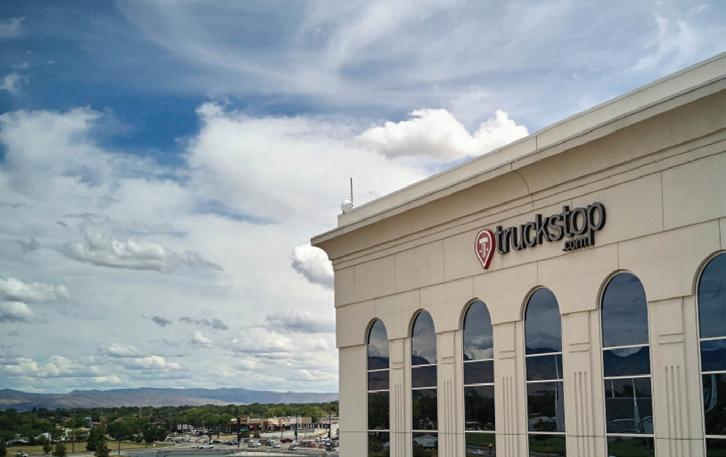
5 minute read
Campire Stories: A History of Redfish Lodge
from IdaHome--July
Campfire Stories: A HISTORY OF REDFISH LODGE
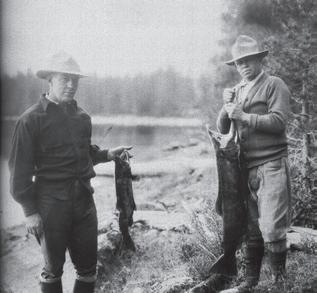
BY ALICE KLEIN
Nestled at the base of Idaho’s Sawtooth Mountains is Redfish Lake, an alpine paradise just south of Stanley and destination for locals and tourists alike.
Named for the returning sockeye salmon that made the lake glitter as red as Dorothy’s ruby slippers, Redfish Lake has been a favorite since the early 1880s when a wagon road over Galena Summit began drawing the attention of crowds seeking both fish and beauty. And, while today’s travelers can stay connected (though they really shouldn’t) via wireless internet, the lake didn’t get a telephone until 1915, soon followed by a dock, which sort of started it all. The docks and boats, it turned out, would sustain the lake via rentals, even when the lodge struggled.
In the summer of 1928, Idaho explorer Robert W. Limbert finally began building Redfish Lodge, which had been a while in the making. Limbert was a photographer, writer, artist, poet, hunter, marksman, and conservationist, among other things. He gained some notoriety when National Geographic published a story about his trek through Idaho lava flows, though it took nearly four years and a lot of convincing. In 1926, Limbert was a traveling delegate for conservation organization the Izaak Walton League, which returned him again and again to Idaho’s varied landscapes. So moved was he by Idaho’s wilderness, he began offering horseback trips, allowing him to share Idaho with others.
Redfish Lake especially spoke to Limbert, and he aspired to build a lodge that would help shelter the same tourists he escorted on horseback. His goal was to create a place where one could truly commune with nature, and today’s visitors still do exactly that. Limbert saw potential in the land, both for its beauty and economic potential thanks to growing automobile and railroad industries. With a group of investors, Limbert formed Sawtooth Tours Incorporated, which sought to build two hotels and 40 cabins for Idaho’s tourists.
His investors were notable--J.L. Kraft, who founded the Kraft Cheese Company, contributed a small amount and stock market speculator Lewis Megowen made a large investment, allowing Limbert to continue his work.
Berrhard Deiderich Horstmann, known as Dick, first broke ground where the lodge stands, building a cabin around 1920. Though Horstmann died in 1928, Limbert worked to open a much larger structure than Horstmann had originally envisioned by signing a 100-year lease on his land. Complete with a fleet of two motorboats, row boats, and canoes, and a not-yetcompleted second floor, the lodge opened 10 tent cabins in 1929, and was very much a family affair--Limbert’s wife and her friend cooked for guests,

1926 -1928
Idaho explorer and National Geographic published photographer and writer, Robert W. Limbert falls in love with Red Fish Lake and plans a lodge.
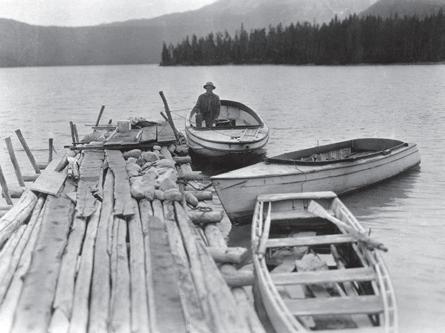
1929
The Lodge opens with 10 tent cabins and a not-yetcompleted second floor, and a fleet of two motorboats, row boats and canoes .
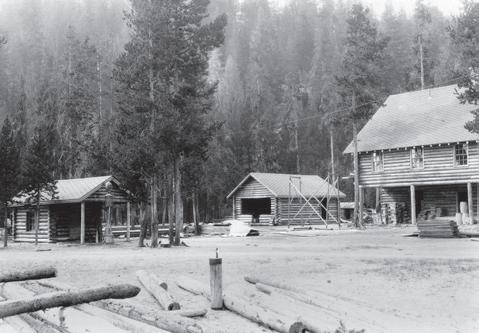

1933
The Lodge is complete but Limbert dies before getting to settle into life at the Lodge. Limbert’s goal was to create a place where one could truly commune with nature, and today’s visitors still do exactly that.
Historical photos courtesy of Red Fish Lodge
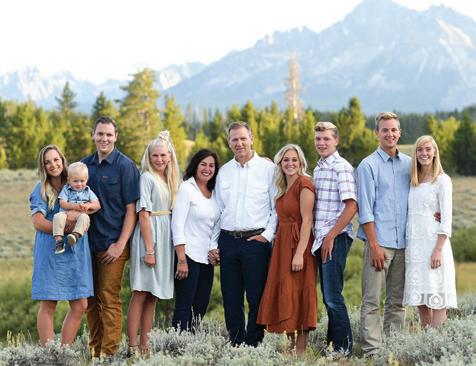
1934 - 1941
Closed during this period and through World War II.
1946
New owners take hold, starting a long line of owners who have improved upon Limbert’s original work.
Present
Additional lodging and camping, a boat launch, interpretive areas, and a Visitor’s Center are now available. The Clegg family are the current owners of Red Fish Lake Lodge and have just completed several updates to the lodge and grounds.
while the friend’s husband helped with construction.
And then, Megowen lost his money in the stock market. Though he assured Limbert he’d come out ahead, everything that wasn’t nailed down was garnished by creditors, including the logs that had been harvested to construct the second floor. Still, Limbert stood by his vision to craft the great lodge. By cobbling together his remaining assets and the money he made, Limbert, with the help of his family, finished the second floor and all remaining construction.Today, units one and two, while updated, still feature original stone hearth fireplaces constructed by the Limbert family--daughter Margaret remembers gathering the stones herself.
When the lodge was done, Limbert needed only to finish his final winter tour with Izaak Walton before he could settle into lodge life at Redfish Lake. Tragically, Limbert suffered a massive heart attack in June of 1933 enroute to the bedside of his dying mother. He died in Cheyenne, Wyoming, and his mother died the next day in Boise. The family lost everything, but the lake itself has kept Limbert’s dream alive (albeit with intermittent closures) for generations to come.
Though researchers aren’t certain, they believe the lodge was closed from 1934 until 1941, and then through World War II. In 1946, new owners took hold, rejuvenating public interest in the beautiful area. Since, the lodge has experienced a number of different owners, all of whom have made improvements on Limbert’s original work. Since, the Redfish Lake area has grown to include additional lodging and camping, a boat launch, interpretive areas, and a Visitor’s Center.
Now, travelers tired from the hustle of their lives retire to Redfish Lodge to tell tall tales beside the crystal lake, roasting marshmallows with their families over glowing coals. They spend their days recreating on the lake, or on foot or horseback, exploring the untouched corners of their Idahome, returning to a meal cooked with love. Though Limbert didn’t live to enjoy the fruits of his labor, his legacy lives on in the way the wind whispers through the pines, his jewel of the Sawtooths shining so bright.


